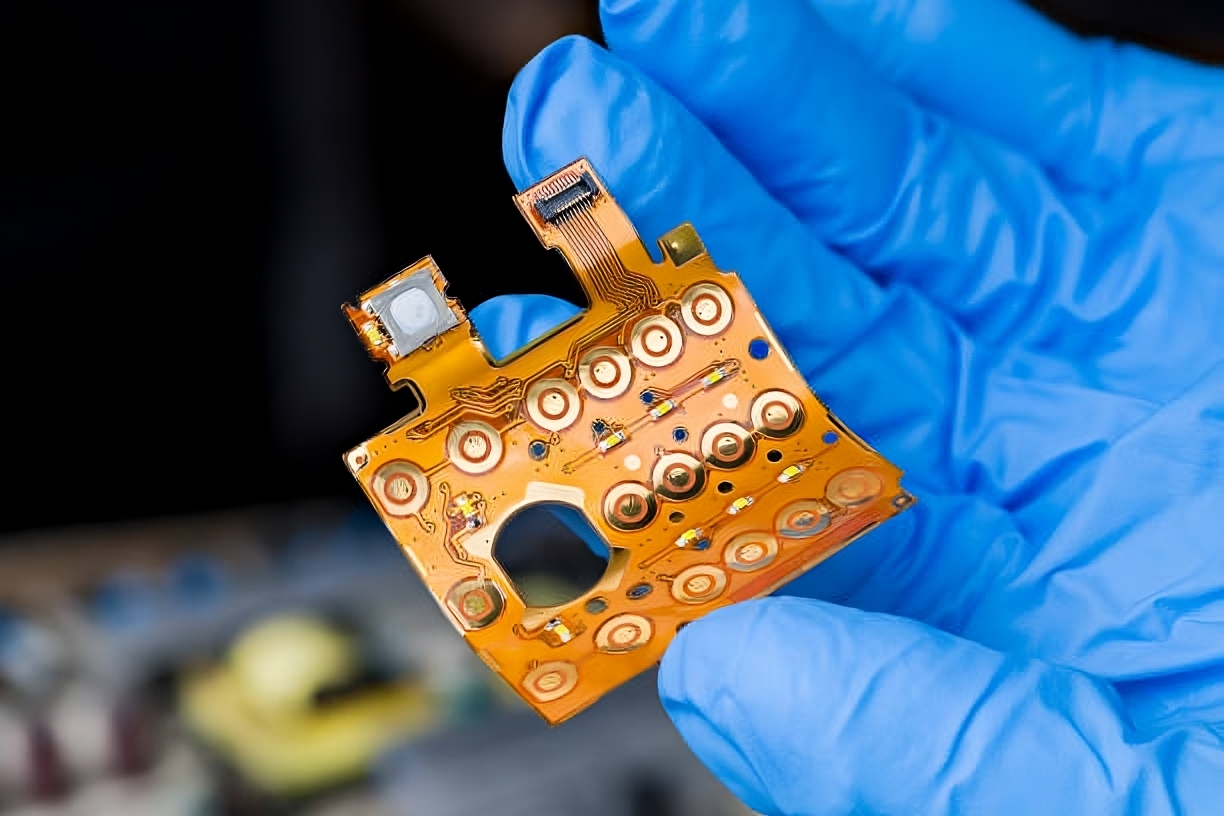What is a Membrane Keypad?
A membrane keypad is a control interface widely used in industrial and electronic devices due to its thin, flexible, and durable structure. These keypads are typically made of very thin layers of plastic or polyester, and they work through conductive circuits placed between these layers. The most significant feature of membrane keypads is their flat and seamless surface, making them highly resistant to dust, moisture, and other external factors.
Membrane keypads often include metal domes to provide tactile feedback to the user. These domes give a "click" sensation when pressed, allowing the user to know that the key has been activated. Additionally, these keypads can be customized with various printing techniques, making them ideal for different industrial and commercial applications.
Membrane Keypad Manufacturing
Membrane keypad manufacturing is a process that requires high precision and technological innovation. This process generally involves the following steps:
- Design and Prototyping: Custom designs are made according to customer needs.
- Material Selection: The membrane material suitable for the application area is chosen.
- Printing: The graphic design is printed onto the membrane surface using special inks.
- Circuit Creation: A circuit diagram is created with conductive ink.
- Lamination: Different layers are assembled, pressed, and bonded together.
- Quality Control: The produced keypads are meticulously tested.
Membrane keypad manufacturing requires high-tech equipment and expert craftsmanship. Especially for industrial applications, membrane keypads are designed and manufactured to withstand harsh environmental conditions.
Types of Membrane Keypads
Membrane keypads are produced in various types to suit different industrial and commercial applications. Here are the most common types of membrane keypads:
- Flat and Metal Dome Membrane Keypad: A simple and effective design widely used.
- Embossed and Metal Dome Membrane Keypad: An embossed design that enhances tactile feedback.
- Embossed Graphic Panel: A visually rich and tactile panel type.
- Embossed Metal Dome and LED Keypad: An advanced design with added lighting features.
- Flat Metal Dome and LED Keypad: A flat surface model with lighting features.
- Embossed and LED Membrane Switch Keypad: A versatile design that combines embossing and LED lights.
- Flat and LED Membrane Keypad: A simple and illuminated model suitable for multi-purpose use.
This variety is designed to meet the specific needs of different industrial applications. For example, LED models are preferred for devices operating in dark environments, while embossed designs are more suitable for applications requiring precise control.
Membrane Keyboard Manufacturing: The Convergence of Ergonomics and Functionality
Membrane keyboard manufacturing goes a step beyond standard membrane keypad production. These keyboards are designed to create broader and more complex control interfaces. They are commonly used in industrial control panels, medical devices, and specialized computer systems.
In membrane keyboard manufacturing, ergonomics and functionality are prioritized. Various keyboard layouts, from QWERTY arrangements to custom function keys, can be applied. The membrane structure allows the keyboards to easily adapt to flat or slightly curved surfaces, providing a significant advantage, especially in applications requiring limited space or special designs.
Membrane Button Manufacturing: The Perfect Solution for Precise Control
Membrane button manufacturing is a specialized production process designed to meet the precise control needs of industrial control systems and electronic devices. These buttons can be produced in various formats, from single command functions to complex control panels.
The most important feature of membrane buttons is their durability and precise working principles. In the manufacturing process, the button design is printed onto the membrane material using special inks. Then, metal domes and conductive layers required for the button's mechanism are placed. This structure provides both visual and tactile feedback to the user.
Membrane Switch Set Manufacturing: Integrated Solutions
Membrane switch set manufacturing refers to the process of assembling multiple switches into a single control unit. These sets are typically designed for complex machine controls, industrial automation systems, or specialized electronic devices.
In the manufacturing process, the overall design of the switch set is made based on customer requirements. This design includes the location, functions, and general interface layout of the switches. Then, the membrane keypad manufacturing process is applied to each switch. Finally, all switches are assembled onto a single flexible circuit, and the necessary connections are made.
Membrane Switch Manufacturing: Precision and Durability Combined
Membrane switch manufacturing is the process of producing precise and durable control solutions for industrial and electronic devices. These switches can be used in various applications due to their slim structure and flexibility.
The manufacturing process starts with the design phase and includes material selection, printing, circuit creation, and assembly. Special materials and production techniques are used, especially for membrane switches that will be used in harsh environmental conditions. For example, waterproofing features can be added, or UV resistance can be enhanced.
The Future of Membrane Keypads
Membrane keypad technology is continually evolving and finding new areas of application. In the future, it is expected that this technology will become more intelligent and interactive. For instance, membrane keypads integrated with touch sensors could offer users more control options.
Additionally, with the widespread adoption of IoT (Internet of Things) technologies, membrane keypads are expected to be integrated with these systems. This will increase remote monitoring and control capabilities, further boosting the efficiency of industrial processes.
Membrane keypad, membrane keyboard, membrane button, and membrane switch technologies continue to provide indispensable solutions for industrial control systems and electronic devices. As these technologies evolve, they not only increase industrial efficiency but also continuously improve the user experience. In the future, it is clear that these products will become smarter, more integrated, and more sustainable.

